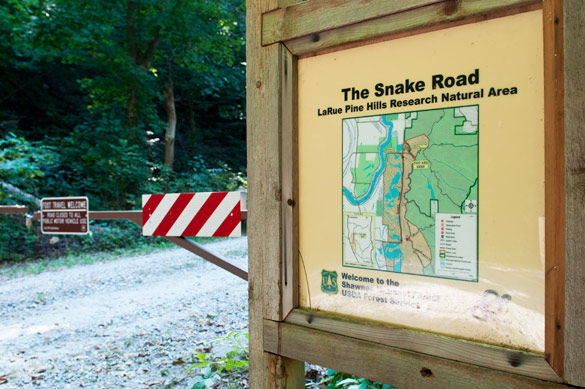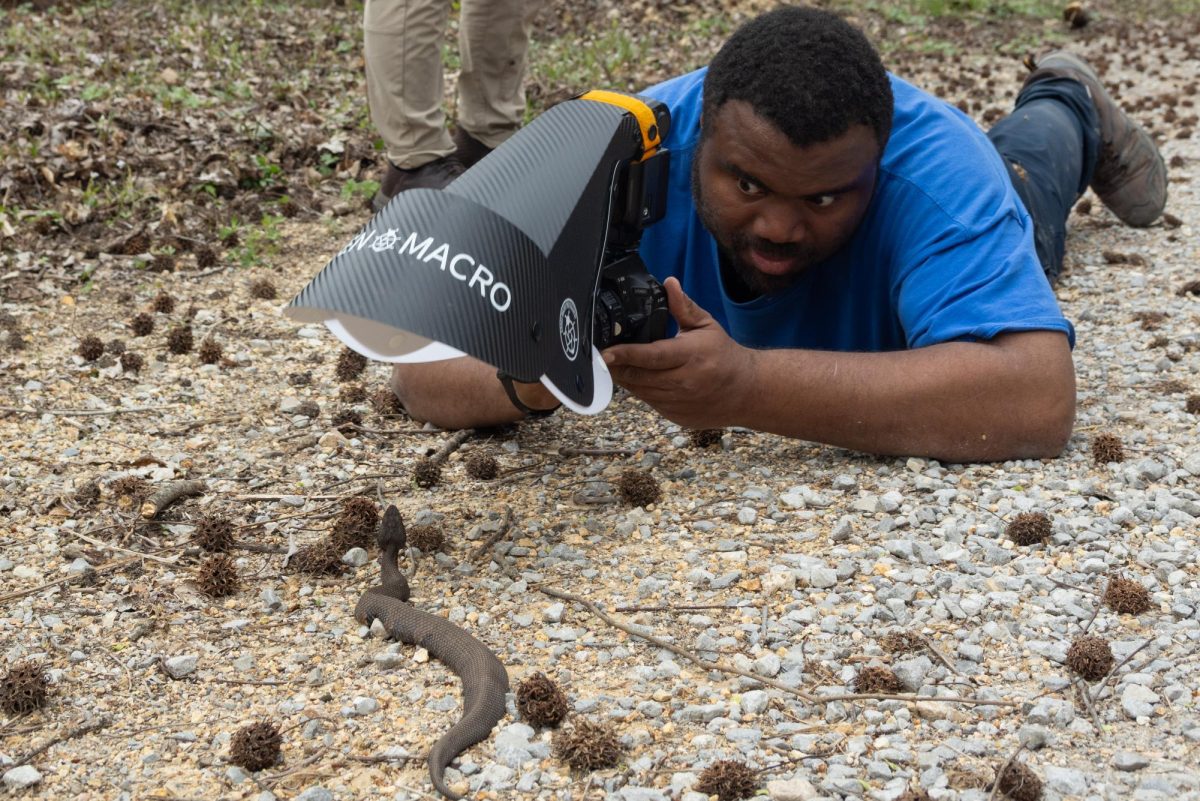Snakes slither across Southern Illinois

September 12, 2013
As LaRue Road 345 winds through the Shawnee National Forest, something else slithers across it.
In fact, 345 is better known as Snake Road, and it is closed from mile post 3 to post 5.8 until October 30th to ensure the safety of the reptiles and amphibians that cross the road on their annual trek to their winter hibernation areas. Amanda Patrick, Public Affairs Officer for the Shawnee National Forest Harrisburg office, said herpetologists have reported ground temperature as the main factor for migration.
“The yearly migration involves hibernation of the animals during the winter months in the bluffs, and so these animals then move to their feeding grounds in the swamps for the summer months,” Patrick said.
Advertisement
Officials did not begin seasonally closing the road until 1972, and even though temperatures are still warm, the department went ahead and closed the road for early migrators, she said.
“The road was opened to traffic year round prior to 1972, and because of this, as you might imagine, this resulted in the death of many of these animals as they were crossing that road,” she said.
She said the road is closed for longer periods of time to let early migrators as well as late migrators cross the road safely. When the road first began closing seasonally, it was only closed for about three weeks, Chad Deaton, a supervisory wildlife biologist for the Shawnee Jonesboro office, said.
Deaton said there are snakes in Shawnee that cannot be found elsewhere in Illinois, because of the very diverse topography. Thousands of animals cross the road during the migration, including 35 different species of snakes and amphibians.
“There are several snakes [on the Illinois threatened and endangered species list], like the Timber Rattlesnake, the Mississippi Green Water snake, the Eastern Ribbon snake, flathead snake,” he said.
Although the road is closed to vehicular traffic, it is not closed to foot traffic, which is encouraged. People travel from all over to watch this slow migration and to observe the natural behavior, Deaton said. While a large number of species do migrate, it is doubtful tourists will see hundreds of snakes crossing at once, he said.
“Some people envision that the road is covered in snakes, but no, it’s nothing like that,” he said. “It’s a gradual migration so at any point in time, you’re not going to see the road covered. As you’re walking, if you’re searching real hard you can find maybe 30 snakes in a day, maybe more.”
Advertisement*
According to the United States Department of Agriculture, both the state of Illinois and the U.S. Forest Service have identified some of these species as threatened or endangered. However, Zoology professor Matt Whiles said even though these animals are on a threatened and endangered species list, it is not the federal list.
“There’s a federal listing and then there’s a state listing,” Whiles said. “And to come to the conclusion that something’s endangered or threatened is (going to) require field studies of populations.”
The road is located specifically in the LaRue-Pine Hills Ecological Area; this area is also known as Otter Pond and is a Research Natural Area or RNA. According to the U.S. Forest Service, the area became the nation’s 250th RNA in 1991. As such, it is permanently protected to maintain biological diversity and to provide places for research and monitoring of undisturbed natural areas, according to the service.
“An area like (LaRue-Pine) is unique for a variety of reasons,” he said. “It’s a unique habitat. It includes everything from cyprus swamps to hilltop glades. And as a result there’s great biological diversity there…that combination makes it a target for protection.”
The biological diversity comes from the area’s unique location at the junction of the four major physio-geographic provinces: the Ozark plateaus, the interior low plateaus, the central lowland province and coastal plain provinces, he said.
For those who want to check out the area around Snake Road, Deaton said it is important to remember not to disturb the wildlife, even though animals usually do not have a problem with it. If you flip over a large rock, that is fine, but it needs to be flipped back over because the area underneath the rock is damp and provides a habitat for animals, such as the salamander, he said. If the rock does not return to its original position, the ground will dry and the habitat will be gone. Also, people are not allowed to catch snakes, nor are they allowed to disturb the snakes, so snake sticks or tongs are not allowed.
“You can find more than 1200 species of plants and animals that make their home (in the RNA),” Patrick said. “Snake Road is a part of this larger area that is just incredibly diverse and offers some amazing wildlife viewing opportunities.”
Advertisement









